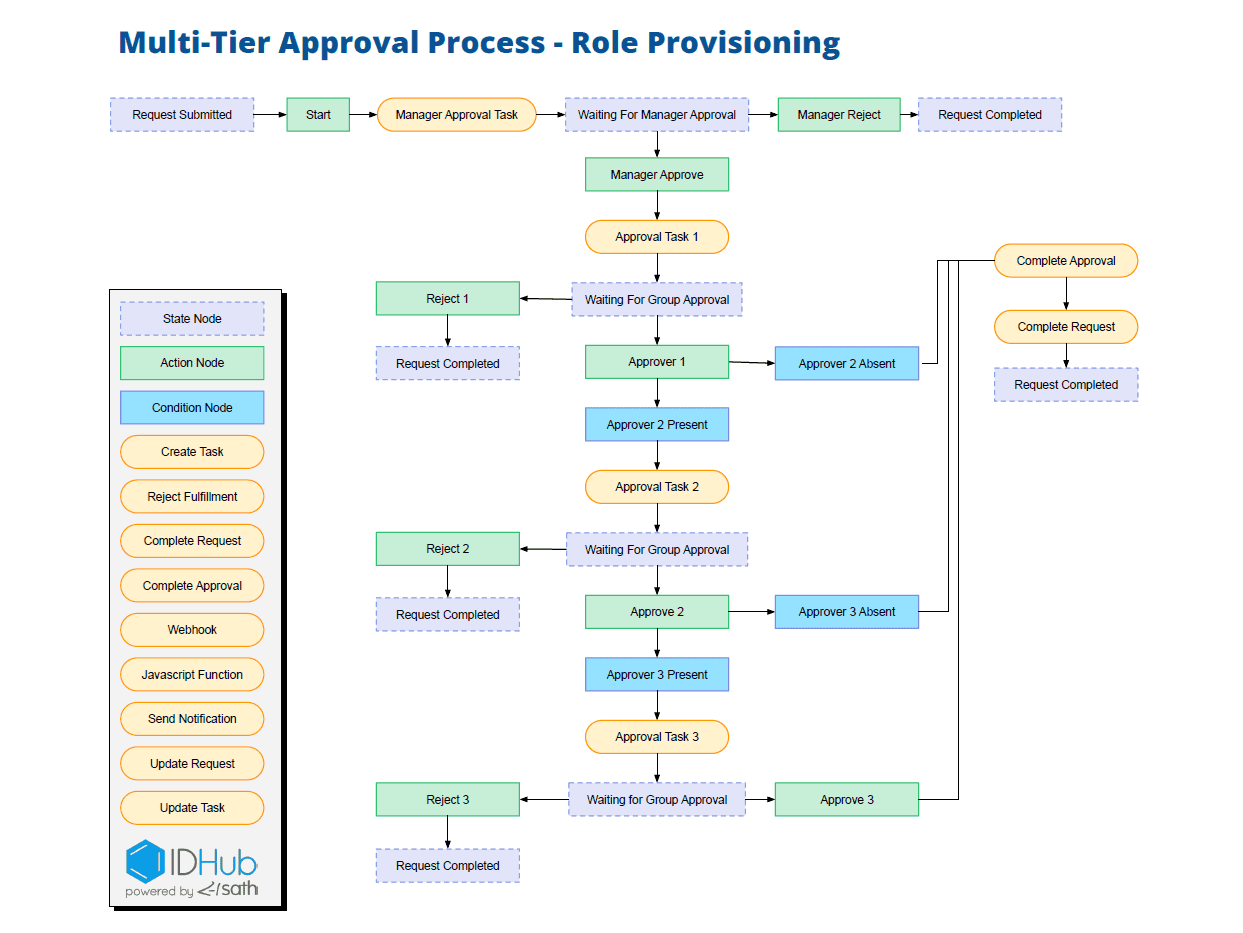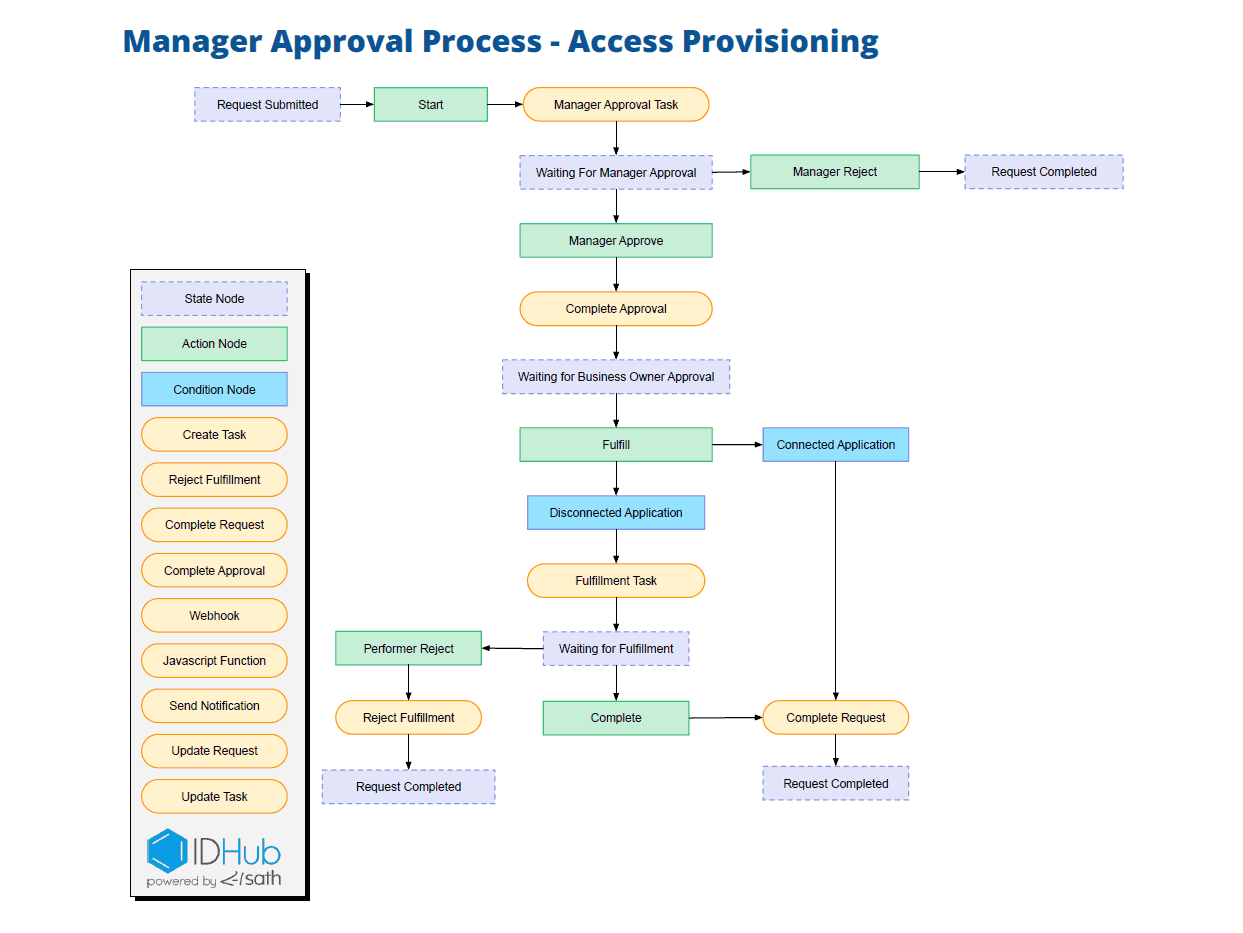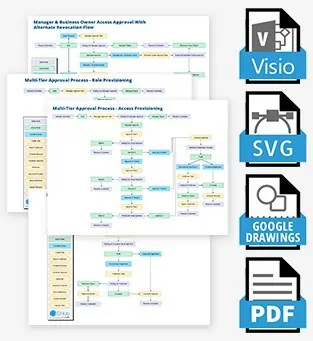
Approval Workflow Templates
GET MY COPY
Approval Process Flowchart Templates: Savvy Tools For IT Management
As an IT manager, you know that your success at leading and managing your company relies heavily on the processes you put into place.

The approval process is perhaps one of the most indispensable tools for secure IT management.
Your user management's security ultimately determines your entire organization's security.
Therefore, a fully scoped-out approval process flowchart is essential for streamlining and documenting your team's processes while ensuring accountability and transparency.
A well-planned and structured approval process can help you manage risks, costs, and resources effectively, thereby avoiding potential pitfalls and gaping security holes that may lurk along your company's path.
It also helps you keep track of changes and revisions throughout the life cycle of a user, application, or resource.
An approval process flowchart can be used to design a new or revise an existing workflow with ease.
A well-designed approval process also ensures that all appropriate stakeholders are involved at every stage — which reduces the risk of an incomplete or inaccurate request being implemented.
Read on to learn more about why you need an approval process for your project, what elements it should have, and where it fits within your workflow as a whole.
Why You Need An Approval Process
The main goal of any IT Manager is to ensure that systems run securely and efficiently. This can be difficult to achieve when user access is delayed or in question. Conversely, a clearly-defined process ensures that each process has a clear and expedited path.
In order to see the best results from your team, it is important to clearly define what needs to happen at each stage of the process.
This ensures that team members are working effectively as soon as possible. A good approval process flowchart is an excellent tool for streamlining and documenting your processes while also ensuring accountability and transparency.

Know Your Process Before You Implement
Before you design an approval process flowchart, it is vital to understand the current state of your processes. You should understand how access is currently granted and what needs to change to improve efficiency.
For example, suppose your process depends on an individual's availability to complete any process. In that case, you could look critically at how you can implement groups of users or proxy users to fulfill requirements instead.
How To Develop An Approval Process Flowchart
One of the best ways to discover what needs to be included in your approval process flowchart is to start with a blank template and build your flowchart from there.
When designing a process flowchart, you want to ensure that you include all the different stakeholders in each process and the different review levels each process should go through.
You can begin to design your flowchart by determining what needs to happen at the beginning of the request and each subsequent level of approval.
What Should Be Included In Your Access Approval Flowchart?
You want your flowchart to be clear and concise, but also want to make sure that it contains all of the relevant process details and possible conditions that could arise.
An ideal flowchart will include the resource name, key approval steps, resource stakeholders, respective team members, and the different review stages that each process should go through.
Define Roles And Responsibilities
It is essential to define the roles and responsibilities of each process step. This will help you to determine which stakeholders should be included in each review stage.
You can use your flowchart to clearly identify what information each step should require and the responsibilities of each member. This will help ensure that involved users get the information they need at the right time while also reducing the amount of unnecessary communication.
Document All Running Processes
It is essential to document all of the active approval processes in your organization. Doing so will enable you to keep track of current operations and statuses while also helping ensure that your team follows the correct protocols.
By documenting the current approval statuses, you can keep track of all processes and determine whether or not adjustments need to be made.
For example, you can document the current review stages, who the stakeholders are, and where bottlenecks arise.
Simplify Team Collaboration With Ready-Made Approval Workflow Templates
Approval workflows are critical—but building them from scratch can be time-consuming and inconsistent across teams. That’s why we’ve created a library of free approval workflow templates you can download and use right away. Available in multiple formats, these templates are designed to help teams visualize, standardize, and share access request processes with ease.
Whether you're managing user onboarding, access changes, or periodic reviews, these templates provide a clear starting point for documenting how approvals should flow. They’re perfect for teams looking to improve consistency, reduce manual steps, and communicate processes more clearly across departments.
Bridge Manual Processes and IAM Automation
While our free templates are a great way to organize and clarify approval flows, they also highlight the power of taking the next step: automating those workflows through an Identity and Access Management (IAM) system. IAM tools eliminate the bottlenecks of manual approvals by routing access requests through dynamic, policy-based workflows tailored to your organization’s structure.
By using our templates to map out your current workflows, your team can more easily transition to an IAM-driven approach when ready—making automation smoother, faster, and aligned with your existing processes. It's a practical first step toward building scalable, secure, and audit-ready access governance.
Conclusion
An approval process flowchart is an excellent tool for streamlining and documenting your team's processes while ensuring accountability and transparency.
When implemented correctly, this document will help to make sure all users have the information they need to make informed decisions throughout every phase of user and resource lifecycles.
